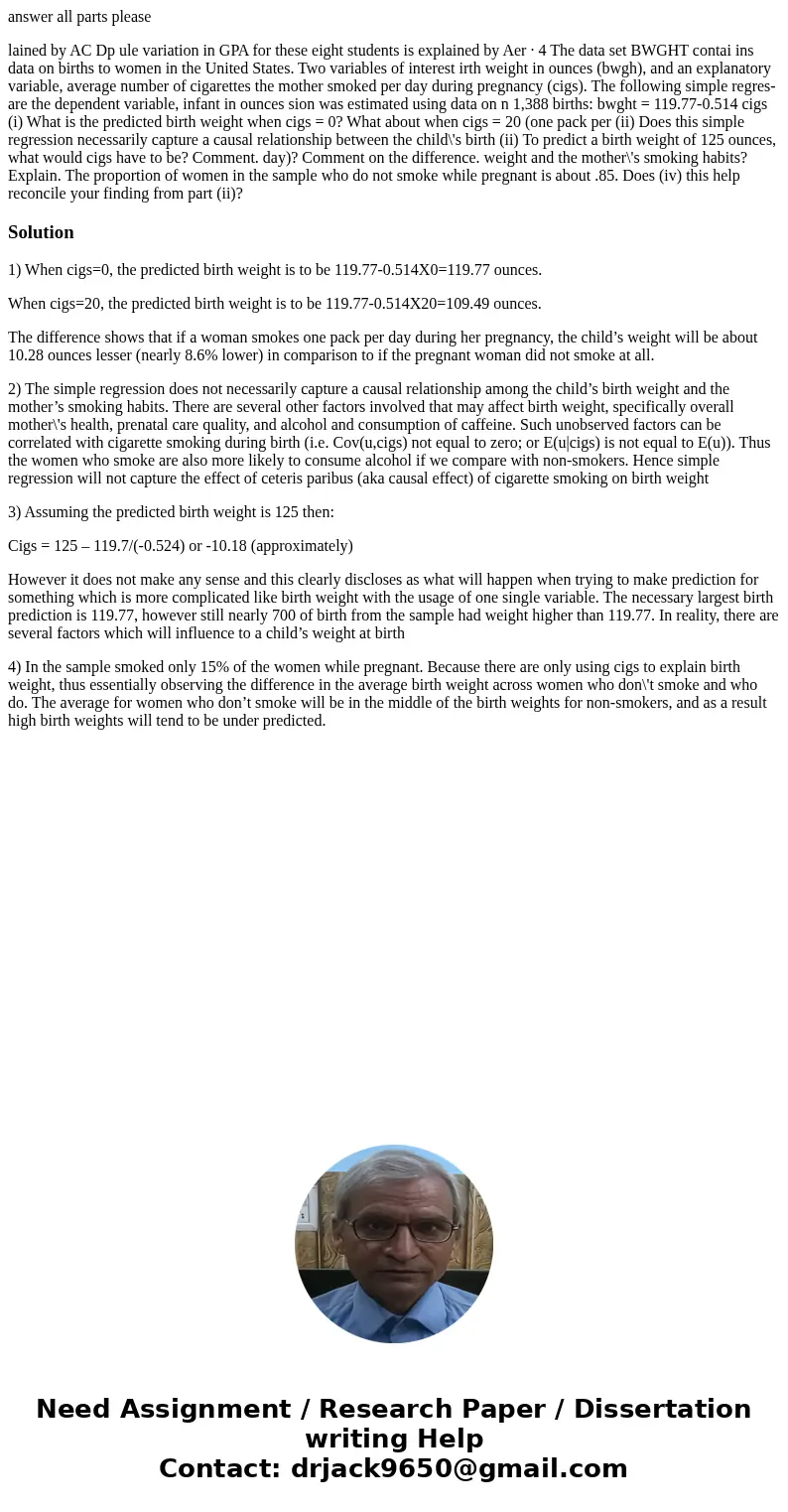answer all parts please lained by AC Dp ule variation in GPA
answer all parts please
lained by AC Dp ule variation in GPA for these eight students is explained by Aer · 4 The data set BWGHT contai ins data on births to women in the United States. Two variables of interest irth weight in ounces (bwgh), and an explanatory variable, average number of cigarettes the mother smoked per day during pregnancy (cigs). The following simple regres- are the dependent variable, infant in ounces sion was estimated using data on n 1,388 births: bwght = 119.77-0.514 cigs (i) What is the predicted birth weight when cigs = 0? What about when cigs = 20 (one pack per (ii) Does this simple regression necessarily capture a causal relationship between the child\'s birth (ii) To predict a birth weight of 125 ounces, what would cigs have to be? Comment. day)? Comment on the difference. weight and the mother\'s smoking habits? Explain. The proportion of women in the sample who do not smoke while pregnant is about .85. Does (iv) this help reconcile your finding from part (ii)?Solution
1) When cigs=0, the predicted birth weight is to be 119.77-0.514X0=119.77 ounces.
When cigs=20, the predicted birth weight is to be 119.77-0.514X20=109.49 ounces.
The difference shows that if a woman smokes one pack per day during her pregnancy, the child’s weight will be about 10.28 ounces lesser (nearly 8.6% lower) in comparison to if the pregnant woman did not smoke at all.
2) The simple regression does not necessarily capture a causal relationship among the child’s birth weight and the mother’s smoking habits. There are several other factors involved that may affect birth weight, specifically overall mother\'s health, prenatal care quality, and alcohol and consumption of caffeine. Such unobserved factors can be correlated with cigarette smoking during birth (i.e. Cov(u,cigs) not equal to zero; or E(u|cigs) is not equal to E(u)). Thus the women who smoke are also more likely to consume alcohol if we compare with non-smokers. Hence simple regression will not capture the effect of ceteris paribus (aka causal effect) of cigarette smoking on birth weight
3) Assuming the predicted birth weight is 125 then:
Cigs = 125 – 119.7/(-0.524) or -10.18 (approximately)
However it does not make any sense and this clearly discloses as what will happen when trying to make prediction for something which is more complicated like birth weight with the usage of one single variable. The necessary largest birth prediction is 119.77, however still nearly 700 of birth from the sample had weight higher than 119.77. In reality, there are several factors which will influence to a child’s weight at birth
4) In the sample smoked only 15% of the women while pregnant. Because there are only using cigs to explain birth weight, thus essentially observing the difference in the average birth weight across women who don\'t smoke and who do. The average for women who don’t smoke will be in the middle of the birth weights for non-smokers, and as a result high birth weights will tend to be under predicted.

 Homework Sourse
Homework Sourse